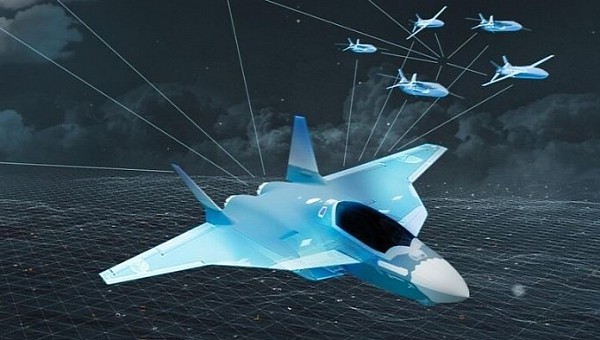If you thought the F-35 and Eurofighter Typhoon probably couldn't stave off a joint Russian/Chinese invasion on their own, it turns out the French Dassault and German Airbus have a similar line of thinking. With the help of a newly inked €3.2 billion contract, work is set to start any day.
In truth, this joint collaboration to bring forth the next great European fighter jet involves far more than two aerospace companies. Engineering and manufacturing groups from every corner of Western Europe are joining together in this shared vision. Dubbed the Global Combat Air System, then changed to Future Combat Air System (FCAS), the prospective new fighter is touted as being designed with many of the abilities contemporary American stealth fighters tout. All at an operating cost that hopefully won't break the bank.
With a choice of turbojet engines from Safran in France or MTU Aero in German Luftwaffe variants, the FCAS will benefit from some of the finest jet engine technology native to Europe. Engines that should at least be on par with the equivalent jets made for American jet fighters by companies like Pratt & Whitney and General Electric. In fact, around a quarter of Safran's current commercial production is dedicated to license-built copies of General Electric CF6 and GE90 turbofans.
The current plan is to integrate unmanned aerial-vehicle connectivity courtesy of Airbus into a next-generation sensor and avionics package from Indra Sistemas of Spain. In no uncertain terms, the FCAS platform will integrate the operations of several last-generation aircraft into one streamlined into the sub-systems of only one airplane.
By doing so, future European NATO pilots will be able to track air and ground targets, coordinate UAV maneuvers, and relay tracking data to nearby friendly forces, all from the comfort of one fighter jet's cockpit. Not to say this will eliminate the need for AWACS. But it'll surely make the jobs of those pilots a fair bit easier.
As of late 2022, the FCAS project is due to enter Phase 1B of development. A period where the specific details of the airframe's powertrain, avionics, and other vital sub-systems are fleshed out in earnest to get blueprints ready for prototype production as quickly as possible.
There's no word on if this NATO-aligned jet fighter will sport any American hardware alongside all the natively European technology. Though it stands to reason, the FCAS project will be developed with a degree of Euro-American cooperation. The novel jet's potential future life assisting squadrons of American F-22s, F-15Es, and F-35s would be the key impetus for this cooperation.
No word on when we might see the results of this intercontinental collaboration either. Although with the American B-21 Raider kicking off the sixth generation of military jets in earnest, it must not be all that far away.
With a choice of turbojet engines from Safran in France or MTU Aero in German Luftwaffe variants, the FCAS will benefit from some of the finest jet engine technology native to Europe. Engines that should at least be on par with the equivalent jets made for American jet fighters by companies like Pratt & Whitney and General Electric. In fact, around a quarter of Safran's current commercial production is dedicated to license-built copies of General Electric CF6 and GE90 turbofans.
The current plan is to integrate unmanned aerial-vehicle connectivity courtesy of Airbus into a next-generation sensor and avionics package from Indra Sistemas of Spain. In no uncertain terms, the FCAS platform will integrate the operations of several last-generation aircraft into one streamlined into the sub-systems of only one airplane.
By doing so, future European NATO pilots will be able to track air and ground targets, coordinate UAV maneuvers, and relay tracking data to nearby friendly forces, all from the comfort of one fighter jet's cockpit. Not to say this will eliminate the need for AWACS. But it'll surely make the jobs of those pilots a fair bit easier.
As of late 2022, the FCAS project is due to enter Phase 1B of development. A period where the specific details of the airframe's powertrain, avionics, and other vital sub-systems are fleshed out in earnest to get blueprints ready for prototype production as quickly as possible.
There's no word on if this NATO-aligned jet fighter will sport any American hardware alongside all the natively European technology. Though it stands to reason, the FCAS project will be developed with a degree of Euro-American cooperation. The novel jet's potential future life assisting squadrons of American F-22s, F-15Es, and F-35s would be the key impetus for this cooperation.
No word on when we might see the results of this intercontinental collaboration either. Although with the American B-21 Raider kicking off the sixth generation of military jets in earnest, it must not be all that far away.







